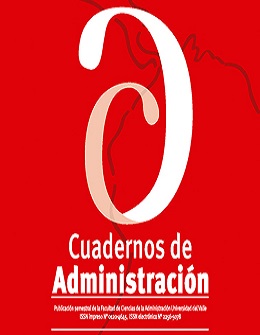Consumption habits and electronic commerce in Lima millennials - COVID-19/2021 pandemic
Keywords:
Consumption habits, Electronic commerce, Millennials, PandemicMain Article Content
Worldwide, and specifically in Peru because of the Covid-19 pandemic, different types of human behavior have been modified due to quarantines imposed by the government. This meant a strict change in the modality in which consumers acquired products or services. Lima millennials represent 32.1% of the population. They had to adapt their consumption habits to the novelties imposed by electronic commerce. This is how, as of 2021, electronic commerce became relevant in face of restrictions on the movement of people. Therefore, from the point of view of this study, the objective of the investigation considers “determining if consumption habits are related to electronic commerce in Lima millennials - Covid-19/2021 pandemic”. Regarding the methodology, the non-experimental design was implemented, a cross-sectional study with a quantitative approach, and correlational descriptive scope. The sample was probabilistically calculated through the formula for finite population proportions with a result of 384 people between 23 and 37 years old (millennials). For obtaining the data, the survey was used as a technique, as well as a questionnaire as an instrument made up of 28 items for both variables. For data processing in the inferential environment according to the normality test, Spearman’s Rho statistician was used, finding positive correlations. About the general hypothesis, the correlation was (r = 0,371) indicating that the relationship is positive, concluding that consumption habits are significantly related to electronic commerce in Lima millennials - Covid-19/2021 pandemic.
Arellano, R. (2017). Estudio nacional del consumidor peruano https://es.slideshare.net/ArellanoMarketing/estudio-nacional-del-consumidor-peruano-base
Armstrong, G., Kotler, P. (2016). Fundamentos de Marketing (3ª ed.). Pearson.
Asociación de Internet.mx. (2018). Estudio sobre los Hábitos de los Usuarios de Internet en México. Scielo. https://bit.ly/3ACNHB1
Blackwell, R. D., Miniard, P. W., y Engel, J. F. (2002). Comportamiento del Consumidor (9a ed.). Ediciones Paraninfo.
Casco, A. R. (2020). Efectos de la pandemia de COVID-19 en el comportamiento del consumidor. Innovare: Revista de Ciencia y Tecnología, 9(2), 98-105. https://doi.org/10.5377/innovare.v9i2.10208 DOI: https://doi.org/10.5377/innovare.v9i2.10208
Descouvières, C. (1998). Psicología económica: temas escogidos. Santiago.
Esteves Pairazamán, A., Fernández Bedoya, V. (2019). Aplicación de estrategias de ventas de tarjetas crediticias para incentivar al comercio electrónico en los clientes de una cadena de bancos en Perú. Revista Científica de la UCSA, 6(1), 23-32. https://dx.doi.org/10.18004/ucsa/2409-8752/2019.006(01)023-032 DOI: https://doi.org/10.18004/ucsa/2409-8752/2019.006(01)023-032
Garrido, L. (2019). Factores motivacionales que influyen en la intención de compra online femenino en el segmento retail de lima Metropolitana. http://repositorio.unfv.edu.pe/handle/UNFV/3699
Jukariya, T., Singhvi, R. (2018). Un estudio de los factores que afectan el comportamiento de compra en línea de los estudiantes. International Journal of Current Microbiology and Applied Sciences (IJCMAS), 7(1), 2558-2565. https://www.ijcmas.com/7-1-2018/T.%20Jukariya%20and%20R.%20Singhvi.pdf
Kotler, P., Armstrong, G. (2016). Marketing (16ª ed.). Pearson Educación.
Kotler, P., Keller, K. L. (2016). Dirección de marketing (15ª ed.). Pearson Educación.
Laudon, K., Traver, C. (2021). E-Commerce (16ª ed.). Prentice Hall.
Linero Bocanega, J. P., Botero Cardona, L. F. (2020). Hábitos de consumo en plataformas e-commerce en adultos jóvenes de la ciudad de Bogotá. Revista Universidad y Empresa, 22(38), 211-236. https://doi.org/10.12804/revistas.urosario.edu.co/empresa/a.8131 DOI: https://doi.org/10.12804/revistas.urosario.edu.co/empresa/a.8131
Mehta S., Saxena T., & Purohit N. (2020). The New Consumer Behaviour Paradigm amid COVID-19: Permanent or Transient? Journal Of Health Management, 22(2), 291-301. https://doi.org/10.1177/0972063420940834 DOI: https://doi.org/10.1177/0972063420940834
Mercado, K., Perez, C., Castro, L., y Macias, A. (2019). Estudio Cualitativo sobre el Comportamiento del Consumidor en las Compras en Línea. Información tecnológica, 30(1), 109-120. https://dx.doi.org/10.4067/S0718-07642019000100109 DOI: https://doi.org/10.4067/S0718-07642019000100109
Monferrer, D. (2013). Fundamentos de marketing. Universitat Jaume I. http://dx.doi.org/10.6035/Sapientia74 DOI: https://doi.org/10.6035/Sapientia74
Palomino, A., Mendoza, C., y Oblitas, J. (2020). E-commerce y su importancia en épocas de COVID-19 en la zona norte del Perú. Revista Venezolana de Gerencia, 25(3), 253-266. https://doi.org/10.37960/rvg.v25i3.33367 DOI: https://doi.org/10.37960/rvg.v25i3.33367
Rodríguez-Rabadán Benito , D. (2013). Proceso de decisión del consumidor: Factores explicativos del visionado de peliculas en sala de cine de los jovenes universitarios españoles. http://hdl.handle.net/10803/146251
Salazar, C., Mondaca, C., y Cea, J. (2018). Comercio electrónico en Chile: ¿qué factores inciden en la decisión de compra? RAN: Revista Academia & Negocios, 1(4), 1-14. https://www.researchgate.net/publication/326493407_Comercio_electronico_en_Chile_que_factores_inciden_en_la_decision_de_compra
Schiffman, L. G., Kanuk, L. (2013). Comportamiento del consumidor. México. Pearson. https://psicologadelconsumidor.files.wordpress.com/2016/04/comportamiento-del-consumidor-schiffman-10edi.pdf
Wilkie, W. L. (1994). Consumer Behavior. Wiley. https://bit.ly/3ABVjE2

This work is licensed under a Creative Commons Attribution-NonCommercial-NoDerivatives 4.0 International License.

